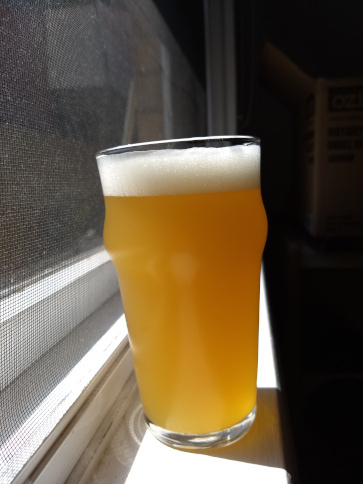Hello all, I've brewed a number (7-ish) NEIPAs and milkshake IPAs with pretty good results, except that they start to degrade/decline in quality/become less hazy after 3-4 weeks in the keg. I've been mining this thread for information and best practices to improve my process, and am confused about a few things--thanks in advance to anyone kind enough to respond!
I brew with a Grainfather and ferment in a Grainfather conical, using a hop spider for boil/whirlpooling and stainless steel mesh cylinder (300 micron) for dry hopping. Previously had no oxygen control beyond avoiding splashing and CO2 purging the keg, but now I've got CO2 pressure transfer capability (which I'm hoping will really help with longevity).
-are folks still using the up-and-down fermentation schedule mentioned way back here (derived from Janish?) with a "soft crash" at 60 and the a final "hard crash" before the last dryhop charge?
-Is the purpose of all the temperature manipulation to get bigger hop presence, to increase the shelf-life (keg-life), to decrease "grassiness", to get particulates out of the beer/prevent clogging, or all of the above? I don't really have issues with clogging, grassiness, or lacking big hop presence--just that my initially delicious (IMHO) NEIPAs fade after 3-4 weeks.
-I've seen some talk about racking off the yeast prior to the final dry-hop charge--is this also designed to enhance beer longevity? Or just to prevent clogging again?
-I've used many different yeasts and have never been disappointed with any of them (London Ale III, Omega Hornindal Kviek). Going to use Yeast Bay Hazy Daze II on my next batch--any special recs or caveats here?
This recipe will be:
6# Golden Promise
6# Briess Rahr 2-row
1# Flaked wheat
1# Flaked oats
Yeast Bay Hazy Daze II
Small bittering charge then 4oz WP then 8oz DH of some combination of Citra, Mosaic, Southern Dawn, Southern Promise
Thanks again for any insights!
(Edited to correct weird formatting/quoting issue)















































![Craft A Brew - Safale BE-256 Yeast - Fermentis - Belgian Ale Dry Yeast - For Belgian & Strong Ales - Ingredients for Home Brewing - Beer Making Supplies - [3 Pack]](https://m.media-amazon.com/images/I/51bcKEwQmWL._SL500_.jpg)















